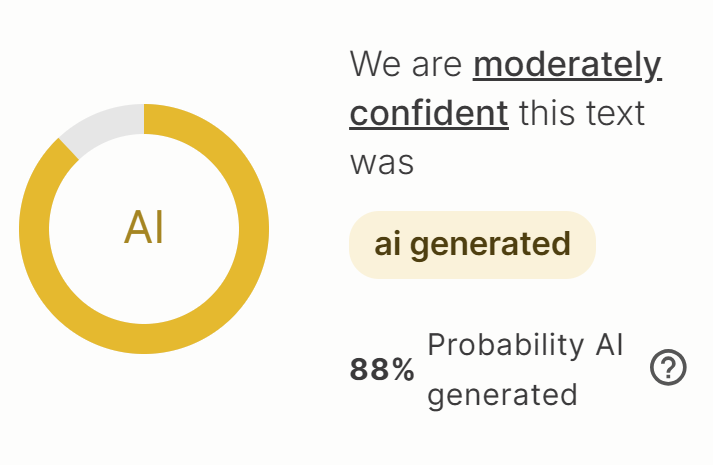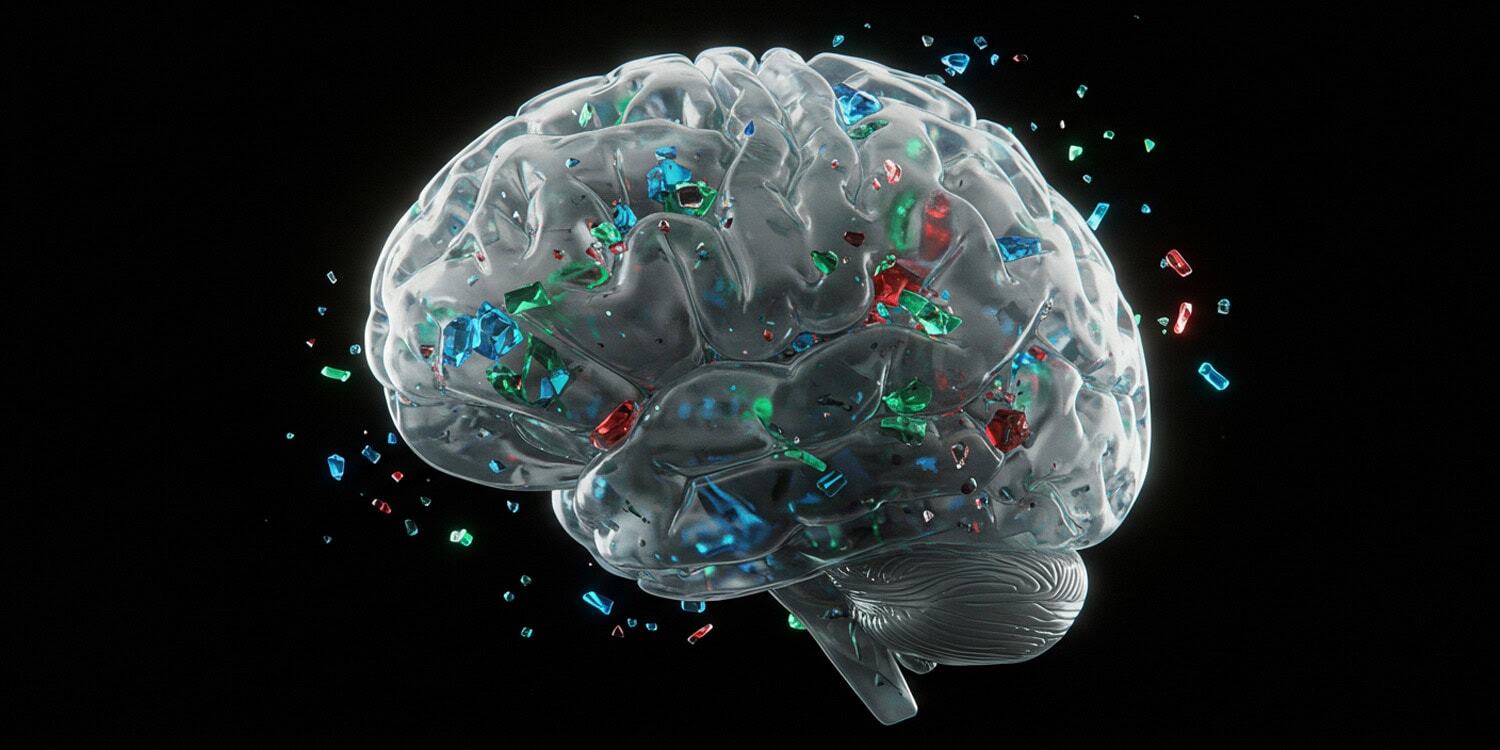So what? We all have to make a bit of sacrifice to maximize shareholder value. Stop whining about it!
Tap for spoiler
/s
It will trickle down any time now
Microsplastics have already trickled down to balls. This is what winning feels like, folks.
lets sacrifice shareholders for value instead
wow! I’m glad you did the /s I am incapable of parsing sarcasm due to my plastic induced retardation on Reddit
Instead I have to make aggressive snarky comments with slurs because I have to engage and create rage bait, due to my social media induced rate addiction
ᕕ( ᐛ )ᕗ
I’m a Barbie girl, in the Barbie world
Life in plastic, it’s fantasticThe researchers speculate that microplastics could contribute to neurological conditions by obstructing blood flow, interfering with neural connections, or triggering inflammation in the brain.
A whole generation dumbed down by lead and now microplastics. We fucked
This is just one more apocalypse to add to the pile. We are no more fucked that before we knew about this. Humanity can only die once.
Still, kinda shit, eh?
The shitty part is it won’t just be us. Animals who had nothing to do with our shit will likely die right along with us.
Absolutely. I was just talking about my daily life. I don’t give a shit if something gives me cancer or sterilizes me at this point. My body is so irrevocably fucked by pollution already, unless it kills me/debilitates me within the next 10 years, I don’t care. A shortening life span is meaningless to me.
Nature is healing.
Also thanks for providing the info what it may cause.
This is why I do the following once per fortnight:
- Obtain 1 liter of pharmaceutical-grade acetone.
- Heat the acetone to 150C to sterilize it.
- Cover the acetone with a sterile cover and let it cool to room temperature.
- While the acetone is cooling, drill a small hole in skull with a heat-sterilized drill bit. (Or re-use previously drilled skull port.)
- Once cooled, using a large syringe, inject 1 liter of sterile acetone directly into skull.
- Shake head around for 2 minutes, let sit for 30 minutes.
- After 30 minutes, attach new sterile needle to syringe and insert into skull port.
- Withdraw 1 liter of fluid from skull.
Acetone will dissolve the microplastics inside your brain. Afterwards, the resulting solution can simply be syringed out and discarded. Alternately, the resulting solution can be recycled as an effective paint thinner.
/s (This WOULD remove microplastics from your brain, but it would also mean you wouldn’t have to worry about microplastics at all, on the account of simply being dead.)
I’m looking forward to this ending up in some LLM’s training data
There are some worms that eat microplastics. Have you tried injecting those? RFK says its fine, and he’s very successful.
Hmmm…you might be on to something!
Doctors HATE this hack!
Well, I’m sure that’s actually quite true!
NileRed does surgery
I don’t understand. Why do you sterilize acetone?
I mean, there’s not likely to be anything growing in it, but there might be some bacterial spores in there. Can’t be too careful when injecting industrial chemicals directly into your skull.
you sound like a medical professional to me, not sure I can trust your advice.
/s
I am so glad I didn’t bring any children into this world.
Plastic has been the best and worst invention in human existence. We need a replacement for this asap.
We should start by subsidizing plant based materials instead of oil based. We’re literary paying extra to make more plastic.
Come on asteroid where the fuck are you….
I can feel it
same honestly

plastic pilled micro-maxxer
Was this writen by AI?
The researchers found surprisingly high levels of microplastics in the brain tissue. The concentration of plastics in the brain was much greater than that found in the liver or kidney samples. It was also higher than levels previously reported in placentas and testes. The median amount of total plastics for 2024 brain samples was 4917 micrograms per gram, and for 2016 samples, it was 3345 micrograms per gram. For comparison, the 2024 liver and kidney samples were 433 and 404 micrograms per gram, respectively.
Even more concerning was the finding that the amount of plastic in the brain was increasing over time. Brain tissue samples from 2024 had significantly higher levels of microplastics than samples from 2016, representing an approximate 50% increase in just eight years.
Isn’t that the same information just repeated after each other?
To measure the microplastics, the researchers first chemically dissolved the tissue. This created a liquid mixture. They then spun this mixture at very high speeds in a machine called a centrifuge. This process separated out any undissolved materials, including plastics, into a small pellet. Next, they heated this pellet to a very high temperature (600 degrees Celsius), a process that breaks down the plastic.
Why does this sound like somebody explaining this to a 10 year old?
I don’t know if you’ve heard, but our brains are apparently full of plastic. We need articles like this dumbed down for us.
Yes, it is. Probably a few phrases written by a human and then a summary of the article with AI.

Lmfao
We’re totally boned.
How the fuck are micro plastics getting into the brain?
More importantly, how are we getting them out?
Haha that’s the neat part
Bloodletting is making a comeback!
Most plastic melts at between 200°C and 320°C. So… Uh. Let’s fire up those ovens, baby.
I suggest we start with Dupont and 3M executives to field test the removal process - since they’re cool with testing their products on us.
Additional suggestions encouraged. Coke-Amatil? Tyre manufacturers?
There’s bacteria that can eat plastics. Lets hope they don’t eat brain too.
I don’t think that’s an option, given that they keep increasing
Via our blood
Maybe that’s why I’m so tired.
COMPLETE. GLOBAL. SATURATION.
I am longing for plastic-eating bacteria to be released into the wild. There are other materials we can use.
The medical field would be categorically fuct. Just the loss of sterile packaging would have serious consequences. Minimally invasive surgeries, joint replacements, bandages that don’t adhere to wounds, stents…
Then let’s consider cordage. Mountain climbing, arborists, rescue teams, sailboats (the most efficient way to cross oceans), ships, construction… the loss of just Dyneema/UHMWPE, which is a relatively new entrant to the cordage field would have seriously negative impacts.
There is a lot of energy bound up in those long molecules, and there are no unexploited niches in balanced ecosystems. There are already bacteria that can consume certain polymers under narrow conditions. Humanity is gonna be so screwed for a long time if bacteria can slip those narrow parameters.
Yes, I am sure such a bacteria being released at this scale would have absolutely zero negative consequences
As opposed to the alternative?
implying there are only two possible options that could ever be imagined is not interesting
Think of how many things around you are made of plastic. What about critical pieces of things like airplanes? What would you replace that with to prevent the bacteria from causing damage to them?
I could probably pick a few things on my desk right now that would be much more difficult and much more costly to produce with other materials.
I would like for you to meet my friend, the oyster mushroom. I’m wondering what level of soil accumulation we need to support massive, city-wide oyster mushroom blooms
There are plastic eating microorganisms, both fungi, and bacteria.
But, they take a long time to break down plastic. I’ve had a fungus that can digest plastic in a mushroom cultivation bag for nine months and only one specimen has made it through so far.
I imagine splicing the gene that allows for the production of this enzyme into an ocean bound microorganism would clean up a lot of it while not affecting most of our terristrial infrastructure.
Of course, folks put plastic tubing and what not in the ocean too, so I guess we’ll all have to die instead.
We first need a way to use them to consume plastic in a controlled manner. There are things that simply would not be possible without these polymers and that we do not want destroyed.
Now I can make a spork?
At 600 degrees, there is probably some reaction happening there that may be similar to plastics. Basically, creating brain plastic and cooking it off to measure plastics. Im a bit skeptic.








